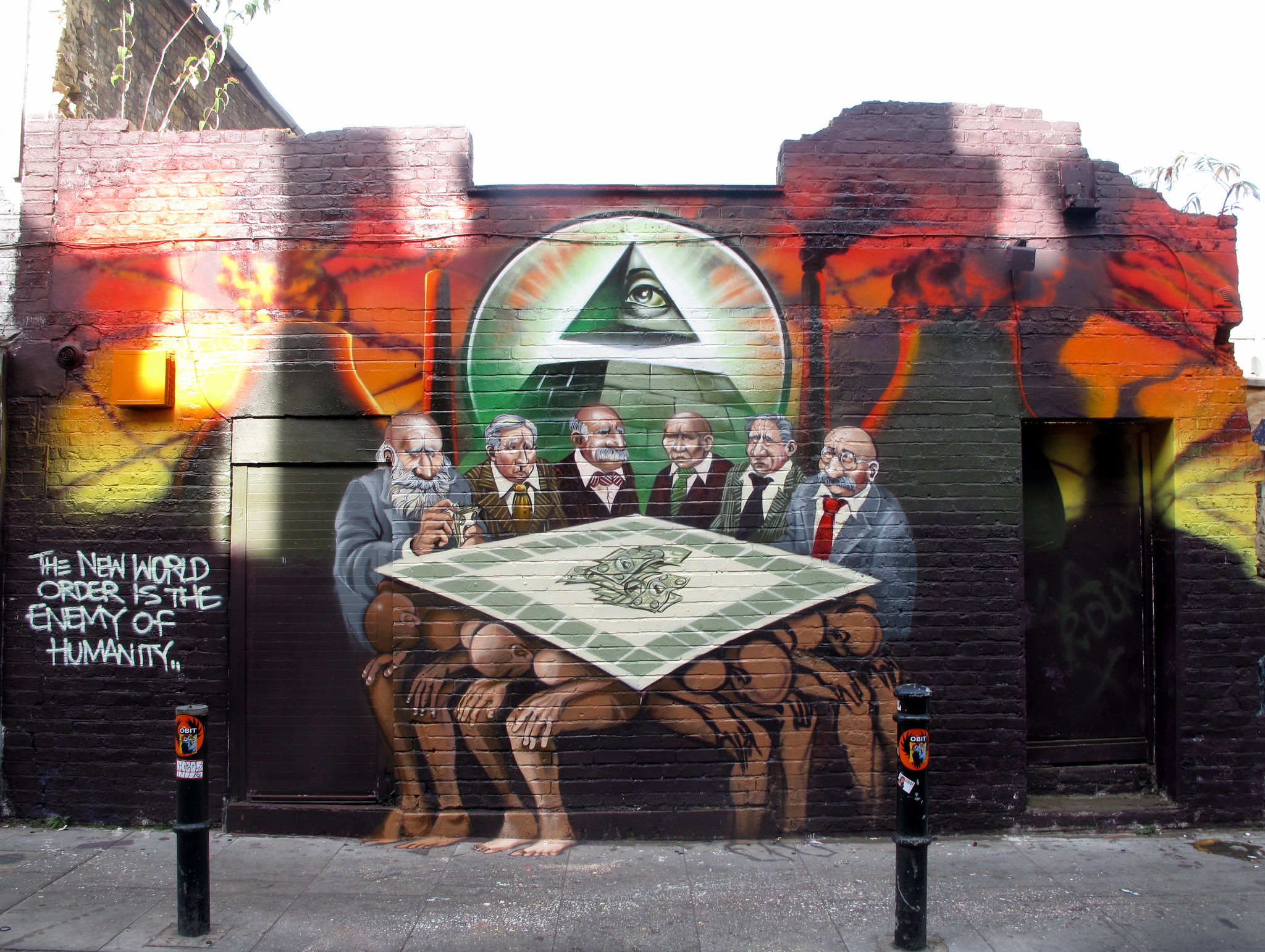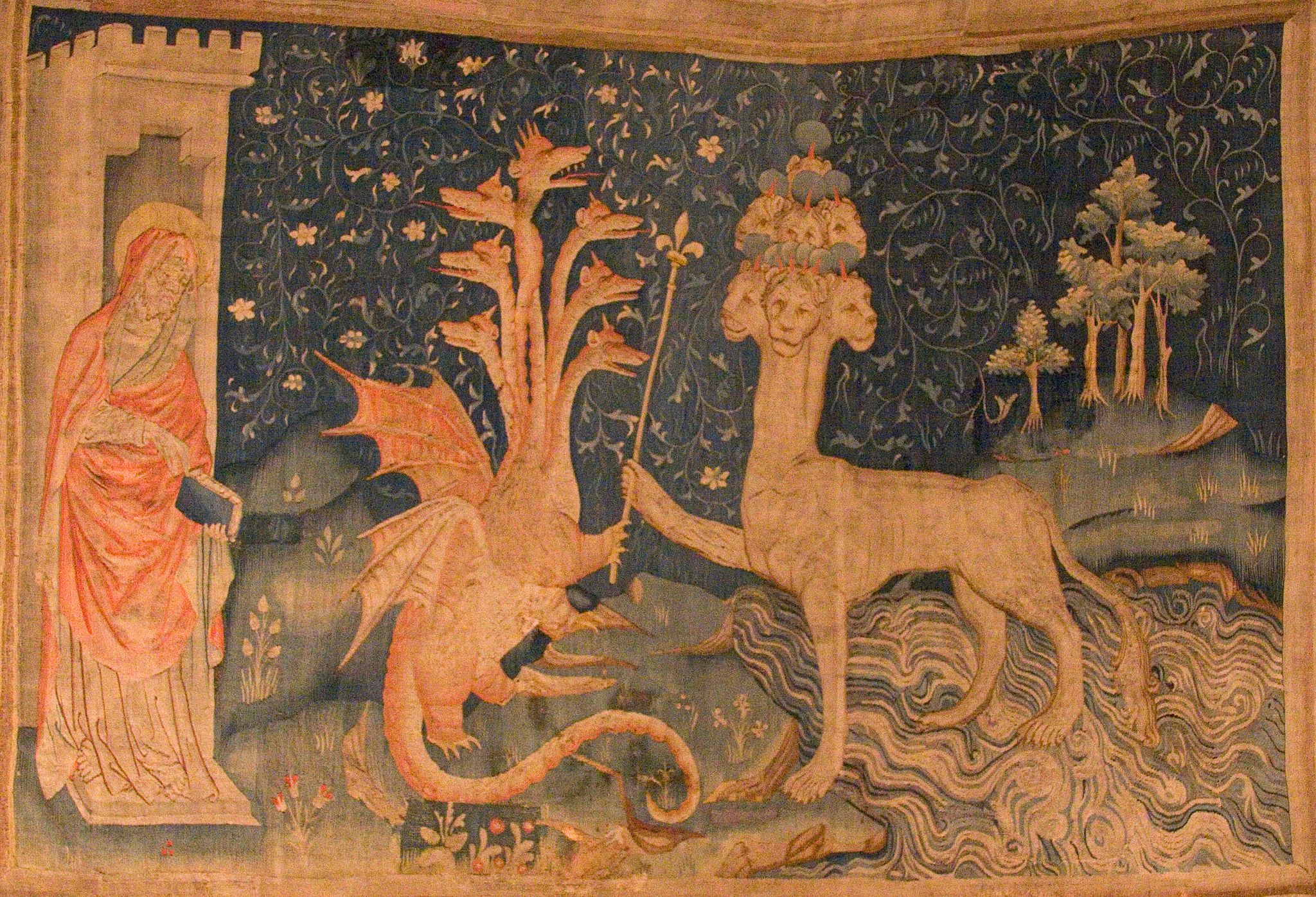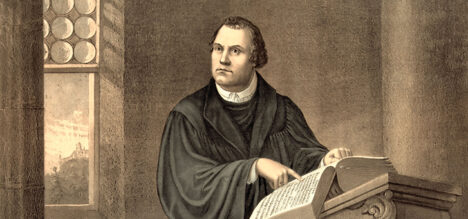
Many who prophesy about doomsday events and the end times in the present day speak about an imminent New World Order—a totalitarian uniting of various powers into a final dictatorial ruler. Those that speak about this power often refer to passages from the Bible, particularly in the book of Revelation. But do these passages actually support their claims? It is true the scenario in the book of Revelation (chapters 13 and 17) refers to a world order, but this could hardly be called “new”. It is more of a return to an old historical order, but this time with an unprecedented worldwide success.
In short: according to the book of Revelation, there will be no consensus and long-term unity. To begin with, the powers mentioned in Revelation (the dragon, the beast, and the false prophet—Revelation 16:13, 19; acc. 12:3; 13:2; 19:20; 20:3) will form a threefold alliance against God and to His people. Later, after the Devil counterfeits the second coming, pretending to be Jesus Christ, for a very short time, all the powers of the earth will submit to this false Christ and, implicitly, to his vicar (see Revelation 17:13; 13:8).
Let us find out more about how the book of Revelation describes this end of earth’s history.
Three great powers in Revelation
The book of Revelation mentions that the last challenge of the world will be the ascent of the alliance formed by three powers: the dragon, the beast, and the false prophet (see Revelation 16:13, 19; acc. 12:3; 13:2; 19:20; 20:3). This alliance will have political and religious effects.
The first power, the dragon, is identified with the devil (Revelation 12:9), the lord and god of this world (John 16:11; 1 Corinthians 4:4; Ephesians 6:12), who acted and continues to act through any power that rises up against God.
The second power, the beast coming out of the sea, is an image of the dragon. The book of Revelations places special emphasis on “one of the heads”, the one with 10 horns. This head, the prophecy says, “had a fatal wound” but it is to be healed (see Revelation 12:3; 13:1, 3 [according to Daniel 7:3, 7]; 17:3, 7). This wound led to the end of the old order, in which the beast coming out of the sea had much power and influence, which it will regain, according to the book of Revelation.
The third power, the false prophet, is the beast with the horns of a lamb, the one that came out of the earth during the end times, which begins to speak with the voice of a dragon, healing the wound of the first beast (see Revelation 13:11-18).
Does the book of Revelation or the Bible decode the identity of these beasts?

Graffiti depicting a caricature of the New World Order, criticised for its anti-Semitic imagery. Duncan c/Flickr
Who is the dragon?
The dragon is identified with the devil or Satan (Revelation 12:9), but he has seven crowned heads (Revelation 12:3). Noticing that the same seven heads are present in the beast(s) of Revelation 13:1; 17:3, we find the key to their identification in Revelation 17:9-10. However, their identification is not direct and complete, but is presented in enigmatic language, indicating only the research direction: the seven heads are “seven mountains [or seven hills] (…) and seven kings”. In biblical poetry, the mountains are metaphors of earthly powers when they are in opposition to “the mountain of the Lord” (Psalm 68:16; Isaiah 2:2; Jeremiah 51:25-26; Daniel 2:35b, 44; Obadiah 1:21).
The text does not refer to kings as persons. Apocalyptic prophecies seldom refer to individuals something shown in earlier prophecies such as Daniel’s vision of similar beasts. By metonymy, kings represent their kingdoms (Daniel 2:37, 39). The beasts that the interpreter angel (who explains the revelation to John) calls “kings” are then revealed as “kingdoms” (Daniel 7:17, 23). One would point to a democracy or a federation of states using the same language: emperor/empire. Therefore, the seven heads of the dragon and the beast(s) are seven kingdoms. However, although they are synchronously seen in the vision, the angel says that they are powers that follow each other historically.
They do not represent all the empires of the world (many of which are not mentioned in the Bible), but only those that came into direct conflict with God’s people, the Israelites and the Christians. They can be distinguished starting from the identification of the sixth “emperor” (empire). The angel points out that by the time he addressed the visionary, five empires had already fallen, and the sixth, the one that was then in power (“one is”), was the Roman Empire (Revelation 17:10; the book of Revelation dates from the end of the first century AD).
Therefore, the first five powers that Israel and the world in which the believers were scattered faced can be identified historically: Egypt, Assyria, Babylon, the Medo-Persian Empire, and the Macedonian Empire, continued by the Hellenistic civilization. It can be seen that, as one goes down in history, these kingdoms become larger and more complex.
If Egypt, Assyria, and Babylon are mere imperialist monarchies, the Empire of Medo Persia is both a dual power (of the Medes and the Persians) and a huge empire spread over three continents. The Macedonian Empire replaces the Persian Empire, but soon becomes divided into four major Hellenistic monarchies.
The sixth empire, the Roman Empire, in turn, is not only spread over three continents, but also continued by the “ten horns” (kings / kings), which first appear in Daniel 7:7, 20, 24. These are the European states, the successors of the Christian Roman Empire, which have expanded over time as a civilization with a universal impact and a Christian tradition. According to Daniel’s vision, this divided empire would remain until the end, when God’s judgment would punish it (Daniel 7:11, acc. Revelation 19:20).
The sixth head of the apocalyptic beast, the Roman Empire which was carried on by political Christianity is, of all heads, the oldest, largest, most divided power in the Hellenistic world, the most hypocritical, and the one with the bloodiest history. This head is especially called the “beast” in Revelation 13. It is the same head that received the death blow, so nowadays it no longer looks like a beast, but like an assaulted victim. The prophecy, however, warns us that the beast will recover and do what it did before under the admiring eyes of the whole world (Revelation 13:3, 12).
The seventh kingdom, which would be short-lived (Revelation 17:10c), is more difficult to identify. A suggestion can, however, be made. If we follow the logic of the succession of previous empires, this seventh head must be a superlative of evil, a more complex power than the previous ones, and it must strike the previous power, as the others had done.
History shows that the power that fatally struck the Christian “empire” is secularism, with all its political and cultural forms, which arose through the French Revolution (Déchristianisation) and which, after the advent of Darwinism and Marxism, produced new anti-Christian political and cultural revolutions, which culminated in the militant atheism of the communist states and the monstrous Nazi episode.
Most crimes against humanity have been committed by the secular states of the most enlightened age in history. Over the course of a few years, communist forces, especially Mao, Stalin, and Pol Pot, destroyed over 100 million lives, surpassing Hitler. Furthermore, the spiritual mutilation brought about by anti-Christian education has been and is more serious than genocide.
Historical Christianity had committed many monstrous crimes, but the number of victims was spread over an incomparably longer period. The Dechristianisation civilization has almost completely collapsed in the East, but it still has cultural and sometimes political support in the West. This power manifested itself in the time between the wounding of the traditional Christian beast and its healing, which has not yet been accomplished.
Who is the beast?
As for the beast from the sea, this also has seven heads and ten horns, like the dragon. But unlike the dragon, the beast has no crowns on its heads, but on its ten horns (Revelation 13:1), which in Daniel’s prophecy, where they first appear, are all on one head. In Daniel 7:7, the head (the beast) with ten horns is the Roman Empire, an interpretation accepted since the early Christian centuries, by Jewish scholars and church fathers(acc. Hippolytus, 5.1, p. 121; Andrew of Caesarea, 191; Jerome, Dan 7:7).
During the same period, the ten horns were identified as kingdoms that would appear and divide the territory of the Empire, and the main horn in their midst was interpreted as the antichrist. The identification of the antichrist horn with medieval papacy was first made in the Middle Ages. Archbishop Eberhard II of Salzburg affirmed this belief at the Regensburg Council (1240) (see LeRoy Edwin Froom, The Prophetic Faith of Our Fathers, vol. 1, p. 796).This view, also shared by the Waldenses, became a standard in the Protestant world after the Reformation (see Catholic Encyclopedia, “Antichrist”).
The Roman Empire was divided politically, but remained relatively religiously united, continuing the totalitarian and arrogant policy specific to paganism, under the authority of the bishops and the threefold pontifical crown.
The “3½ times”/ years (= 42 months = 1260 days) of the Roman antichrist’s domination (Daniel 7:25; Revelation 12:6, 14; 13:5), were interpreted in the apocalyptic code as “a day for each year” (acc. Ezekiel 4:6d) and thus symbolize 1260 years of terror over believers who refused to submit to the state church, from Justinian to Napoleon (538-1798). The correct calculation of this period, which represents the time when the popes exercised their temporary power, was made in 1689, a century before the end of the period (see Drue Cressener, The Judgments of God, 1689, p. 312).
John’s vision recounted in Revelation 13:1-2 describes the beast coming from the sea as a combination of all the beasts in Daniel 7, but the prophecy deals exclusively with the Roman head, the one with ten horns, now also crowned, as an allusion to the time just before the great collapse, when the pseudo-Christian powers of the world “for one hour will receive authority as kings along with the beast” (Revelation 17:12-14).
The prophecy also refers to the historical persecution during the 1260 years, so this beast is seen as an equivalent symbol of the antichrist’s horn in Daniel 7:25 (see Revelation 11:2-3; 12:6, 14; 13:5). However, in Revelation 13, the papacy is no longer a dominant horn among others, but is the Roman head itself in the final phase of world history.
The death blow/wound received by the beast began with the repeated abolition of the pontifical state from 1798-1870 and the weakening of the church’s authority, with the advent of secularism. The Vatican, the modest successor to the medieval pontifical states, has been recognized since 1929, and, after the modernist reform (1960, Vatican II), through the initiation of official diplomatic relations with the United States (1984) and through the political and ideological involvement of the last popes, the political influence of the Vatican began to grow.
The prophecy, however, foretells that the mortal wound will heal, the beast will receive universal admiration and recognition, and will act as in the Middle Ages—which would be unbelievable were it not for the many unbelievable facts history is full of.
Who is the false prophet (the beast-lamb)?
The beast with lamb horns in Revelation 13:11 is more difficult to identify because it does not come up in previous prophetic visions. Nevertheless, a few clues can help. Lamb horns represent a youthful and benevolent policy, compared to the dangerous horns of the first beast. Still, the described creature manages to control the whole world (Revelation 13:12, 14b). It is described as “coming out of the earth” as the spirit of the prophet invoked by the witch (1 Samuel 28:13-14). It works miracles like Elijah’s (Revelation 13:13) to deceive the world, which is why this beast is called the “false prophet” in Revelation.

Kimon Berlin, user:Gribeco, CC BY-SA 3.0, via Wikimedia Commons
Given that it does all these political and religious acrobatics in favor of the first beast, enabling the healing of its historical wound, it is suggested that this world power has a recent history and that its predicted actions have not yet come to fruition or are just beginning. The identification of the pseudo-prophet beast with the United States was proposed by John N. Andrews in 1851, who also suggested that the image of the beast was a form of fallen Protestantism that would control the state.
The apocalyptic alliance of evil
The apocalyptic description is quite transparent. The three powers form a blasphemous alliance: the dragon parodies the Father; the first beast parodies the Son, and the false prophet parodies the work of the Holy Spirit, who spoke through the prophets.
The threefold alliance of evil, described in Revelation, is formed to oppose God and God’s people. The identities of the three powers show us that this alliance (also called Babylon, Revelation 14:8; 16:19; 17:5; 18:2, 10, 21) will encompass all political and religious forces that will sympathize with the alliance’s project, under the leadership of the dragon (the devil) and his lieutenant (the Roman antichrist).
The loyalty test to this universal alliance will be related to the imposition of “a mark on their right hands or on their foreheads” (Revelation 13:16; 14:9; 20:4b), under economic pressure, accompanied by persecution, until the “final solution” (Revelation 13:15, 17; acc. 6:11c; 17:6; 18:24; 20:4). The identification of the “mark of the beast” with the “pope’s Sabbath” (a future Sunday law) was first proposed in 1849 by Joseph Bates (see Seal of God, p. 37) in accordance with the metaphor of the holidays as “signs” (Exodus 13:9, 16; 31:13-17).
What the book of Revelation does NOT say about a new world order or the end of the world
The apocalyptic scenario is only a non-detailed sketch of the future. Identifying symbols is sometimes approximate or just an attempt. The fulfillment of prophecies usually surprises the experts (Isaiah 43:9; John 16:4). It is not healthy to risk making geopolitical predictions and fanciful and conspiratorial speculations, fueling the hysteria of those who demonize state authorities (Romans 13:1-8; 2 Peter 2:10-12; acc. Luke 20:25; John 18:36) and maintain a phobia of a global control through chips, vaccines, passports, etc.
They see the danger coming from the secular and technological direction, not from the direction of false Christianity, as Scripture actually indicates (2 Thessalonians 2:3-4). Revelation suggests that the greatest danger at the end of time lies in the healing of the deadly wound of the old Christian regime that once ruled the world.
Therefore, the book of Revelation does NOT reveal the project of a supposedly “occult world” of enlightened magnates united under a world leader of this new world order, but reveals the devil’s last project. The Bible says that in the end the devil will stage his own second coming, showing himself to the world in the image of Christ and using His manners (Revelation 13:4a; 17:10-11; 20:10a, acc. Luke 21:8; 2 Corinthians 11:14), providing the evil alliance that is trying to impose itself globally with strength and arguments.
According to the Bible, all who trust in anything other than the Holy Scriptures will be deceived (2 Thessalonians 2:9-12). According to Revelation 13:8, before the Lord Jesus Christ’s true return, the false Christ—that is, the devil himself—will gain the support of the whole world and push it toward disaster. This will be the last truly universal empire before Christ’s return (Revelation 19:11-16), before the judgment of the whole world (Revelation 20:12-15), and the renewal of all things (Revelation 21:1, 5).
Want to learn more about how to decode the true meaning of texts? Try our free course here, or contact us via the following link.
Florin Lăiu is a contributor for ST Network, the European version of Signs of the Times. A version of this article was first published on their site and is reposted here with permission









